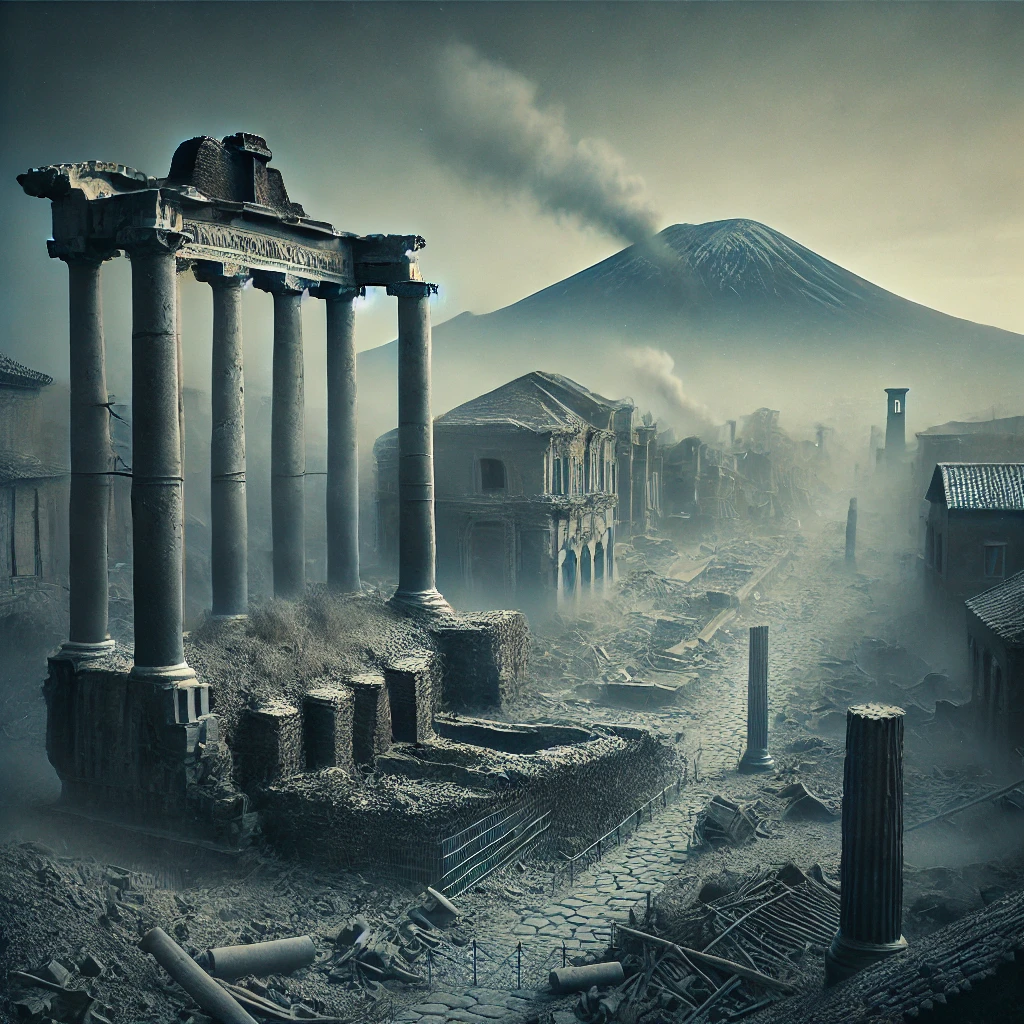On August 24, 79 AD, Mount Vesuvius erupted in one of the most catastrophic volcanic events in recorded history. The eruption buried the Roman cities of Pompeii, Herculaneum, Oplontis, and Stabiae under a thick blanket of volcanic ash and pumice. The eruption released a lethal cloud of stones, ashes, and fumes to a height of 33 kilometers (20 miles), spewing molten rock and pulverized pumice at the rate of 1.5 million tons per second. This violent explosion caused the immediate and complete destruction of the cities in its path, preserving them in time.
The eruption began in the early morning, and the cities were quickly engulfed by falling ash and lava flows. The intense heat and subsequent pyroclastic surges—fast-moving currents of hot gas and volcanic matter—claimed thousands of lives. The citizens of Pompeii and the surrounding towns were largely caught off guard, and the eruption left the cities frozen in a moment of catastrophe.

The Archaeological Significance
The excavation of Pompeii and other affected areas began in the 18th century and has since revealed a remarkably detailed picture of Roman life frozen at the moment of disaster. The preservation of buildings, artifacts, and even human remains provides a unique glimpse into the daily life of ancient Romans. These findings have offered invaluable insights into Roman urban planning, architecture, and daily routines, significantly enhancing our understanding of Roman civilization.
Archaeologists have uncovered well-preserved frescoes, mosaics, and household items, as well as the casts of victims who were caught in the eruption’s aftermath. The meticulous documentation of these remains has contributed to the broader study of ancient history and archaeology. The site of Pompeii, along with Herculaneum and the other affected towns, is now a UNESCO World Heritage site and remains one of the most important and popular archaeological destinations in the world.

The Eruption’s Legacy
The eruption of Mount Vesuvius on August 24, 79 AD, remains one of the most studied and dramatic volcanic events in history. It serves as a stark reminder of the power of natural disasters and the impact they can have on human settlements. The event has been depicted in literature, art, and media, illustrating its lasting significance and the enduring fascination with its dramatic story.
The study of Vesuvius’s eruption has also influenced our understanding of volcanic activity and disaster preparedness. Research into the eruption’s dynamics has helped improve modern volcanic monitoring techniques and disaster response strategies. The legacy of Vesuvius underscores the importance of historical events in shaping our approach to contemporary challenges, reminding us of the need for vigilance and preparedness in the face of natural hazards.

August 24, 79 AD, is remembered as a day of immense tragedy and historical significance. The eruption of Mount Vesuvius not only reshaped the lives of those who lived in its shadow but also provided a remarkable archaeological record that continues to inform and inspire studies of ancient history.
